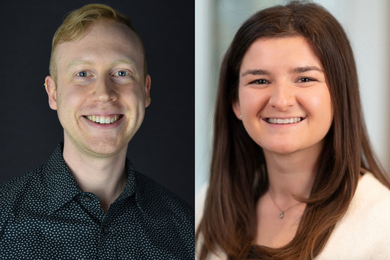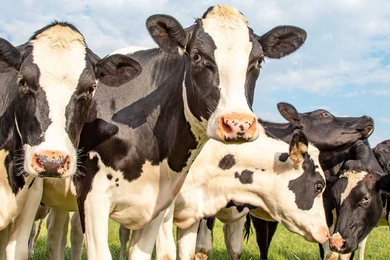In the spirit of Doc Edgerton’s famous aphorism, “Tell everyone everything you know,” the MIT Edgerton Center opened its doors on April 28 to participate in Obscura Day, an international celebration of unusual places.
“Obscura Day is the culmination of months of outreach to our extended community and to organizations like MIT seeking to match local hosts with opportunities for nearby exploration of unusual places hidden in plain sight," said Annetta Black, senior editor of Atlas Obscura, by email. “We get to work with major museums and collections — from the U.S. National Parks Service and the National Museum of Scotland — to tiny collections hidden in neighborhood garages and local historians, bloggers and urban explorers. The hardest part is deciding where to go ourselves.”
Twenty-one people — ranging in age from three to 70 years — from as far away as New York City, made the pilgrimage to the Edgerton Center to see the unseen, the events that occur too fast to be seen by the naked eye.
Edgerton Instructor Tony Caloggero, who worked closely with the late Harold “Doc” Edgerton, set up the funnels, strobe lights and whole (not 2 percent) milk necessary to photograph the milk drop, based on the iconic “Milk Drop Coronet” photo by Edgerton.
“I'd seen Doc Edgerton's milk drop coronet picture many times before but I never knew how strobes were used to capture specific points of motion. And I never imagined that it could be captured with a smartphone camera. I was really excited to find that I could take the same picture myself,” said Obscura Day visitor Sarah Lienwand.
Caloggero and Dr. Jim Bales, assistant director of the Edgerton Center, facilitated the three-hour, hands-on demonstration. Along with a demonstration of the milk drop photo, participants manipulated the strobe lights flashing on water drops, watched water drops dance to music, and used strobes to animate images on spinning disks. Additionally, each visitor had their photo taken as they popped a balloon, each flash catching the balloon half-popped.
Kyle Hounsell ’14, Strobe Project Laboratory assistant at the Edgerton Center, demonstrated high-speed video by capturing the motion of a rat trap. Each participant had the opportunity to film their own high-speed video. The group also watched the 1940 short documentary “Quicker’n a Wink,” a film about Doc Edgerton in which Doc demonstrates stroboscopic photography.
“It is a delight to be able to give visitors the chance to explore the world of high-speed events and help them create their own stunning images,” said Bales. “The spirit of Doc is alive when we can share his vision with the world.”
An estimated 5,000 people in 54 cities around the country and around the world participated in this year’s Obscura Day, experiencing first hand “the world’s wonders, curiosities and esoterica.”
“Obscura Day is the culmination of months of outreach to our extended community and to organizations like MIT seeking to match local hosts with opportunities for nearby exploration of unusual places hidden in plain sight," said Annetta Black, senior editor of Atlas Obscura, by email. “We get to work with major museums and collections — from the U.S. National Parks Service and the National Museum of Scotland — to tiny collections hidden in neighborhood garages and local historians, bloggers and urban explorers. The hardest part is deciding where to go ourselves.”
Twenty-one people — ranging in age from three to 70 years — from as far away as New York City, made the pilgrimage to the Edgerton Center to see the unseen, the events that occur too fast to be seen by the naked eye.
Edgerton Instructor Tony Caloggero, who worked closely with the late Harold “Doc” Edgerton, set up the funnels, strobe lights and whole (not 2 percent) milk necessary to photograph the milk drop, based on the iconic “Milk Drop Coronet” photo by Edgerton.
“I'd seen Doc Edgerton's milk drop coronet picture many times before but I never knew how strobes were used to capture specific points of motion. And I never imagined that it could be captured with a smartphone camera. I was really excited to find that I could take the same picture myself,” said Obscura Day visitor Sarah Lienwand.
Caloggero and Dr. Jim Bales, assistant director of the Edgerton Center, facilitated the three-hour, hands-on demonstration. Along with a demonstration of the milk drop photo, participants manipulated the strobe lights flashing on water drops, watched water drops dance to music, and used strobes to animate images on spinning disks. Additionally, each visitor had their photo taken as they popped a balloon, each flash catching the balloon half-popped.
Kyle Hounsell ’14, Strobe Project Laboratory assistant at the Edgerton Center, demonstrated high-speed video by capturing the motion of a rat trap. Each participant had the opportunity to film their own high-speed video. The group also watched the 1940 short documentary “Quicker’n a Wink,” a film about Doc Edgerton in which Doc demonstrates stroboscopic photography.
“It is a delight to be able to give visitors the chance to explore the world of high-speed events and help them create their own stunning images,” said Bales. “The spirit of Doc is alive when we can share his vision with the world.”
An estimated 5,000 people in 54 cities around the country and around the world participated in this year’s Obscura Day, experiencing first hand “the world’s wonders, curiosities and esoterica.”











